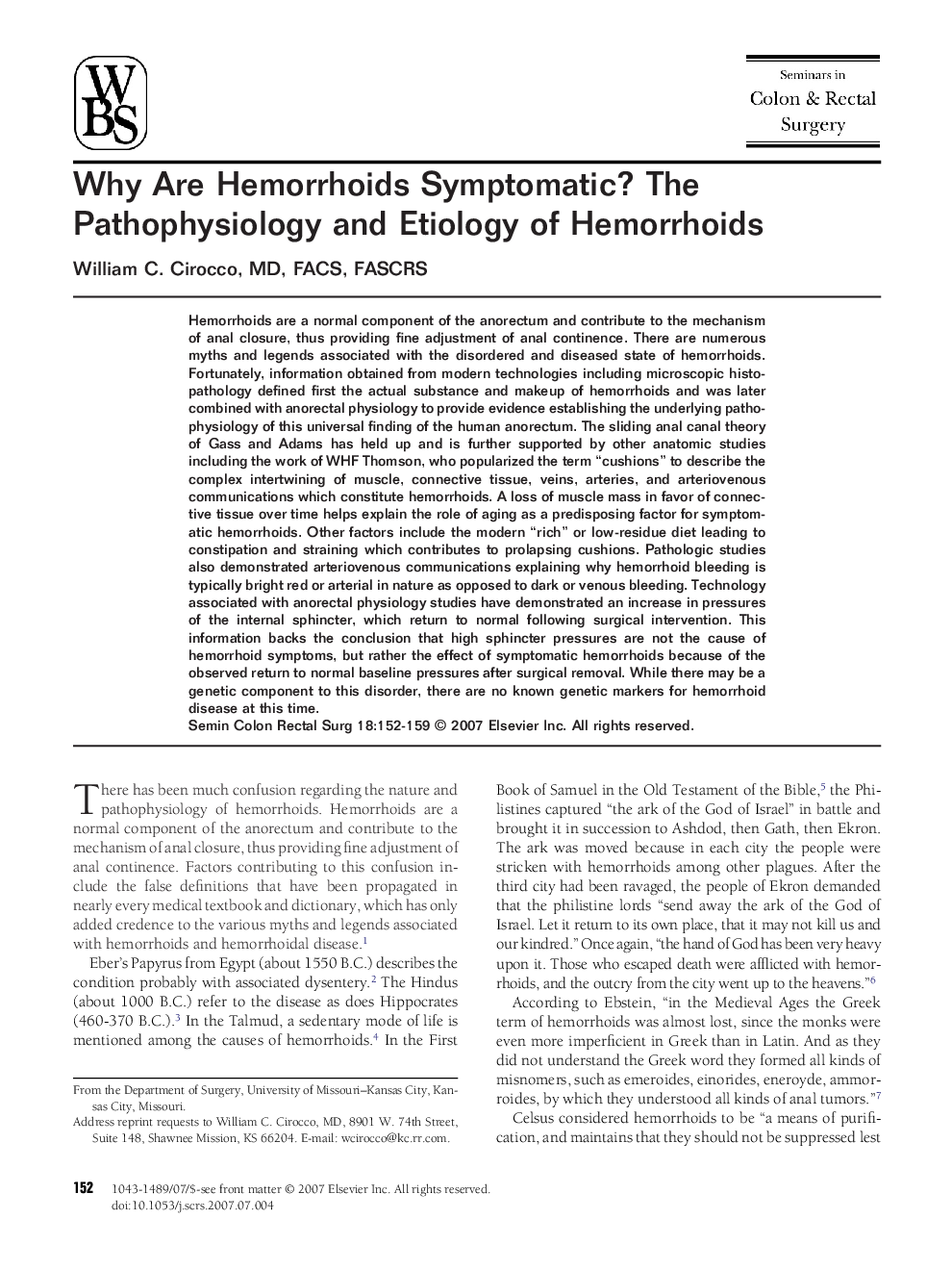| Article ID | Journal | Published Year | Pages | File Type |
|---|---|---|---|---|
| 3319678 | Seminars in Colon and Rectal Surgery | 2007 | 8 Pages |
Abstract
Hemorrhoids are a normal component of the anorectum and contribute to the mechanism of anal closure, thus providing fine adjustment of anal continence. There are numerous myths and legends associated with the disordered and diseased state of hemorrhoids. Fortunately, information obtained from modern technologies including microscopic histopathology defined first the actual substance and makeup of hemorrhoids and was later combined with anorectal physiology to provide evidence establishing the underlying pathophysiology of this universal finding of the human anorectum. The sliding anal canal theory of Gass and Adams has held up and is further supported by other anatomic studies including the work of WHF Thomson, who popularized the term “cushions” to describe the complex intertwining of muscle, connective tissue, veins, arteries, and arteriovenous communications which constitute hemorrhoids. A loss of muscle mass in favor of connective tissue over time helps explain the role of aging as a predisposing factor for symptomatic hemorrhoids. Other factors include the modern “rich” or low-residue diet leading to constipation and straining which contributes to prolapsing cushions. Pathologic studies also demonstrated arteriovenous communications explaining why hemorrhoid bleeding is typically bright red or arterial in nature as opposed to dark or venous bleeding. Technology associated with anorectal physiology studies have demonstrated an increase in pressures of the internal sphincter, which return to normal following surgical intervention. This information backs the conclusion that high sphincter pressures are not the cause of hemorrhoid symptoms, but rather the effect of symptomatic hemorrhoids because of the observed return to normal baseline pressures after surgical removal. While there may be a genetic component to this disorder, there are no known genetic markers for hemorrhoid disease at this time.
Related Topics
Health Sciences
Medicine and Dentistry
Gastroenterology
Authors
William C. MD, FACS, FASCRS,
